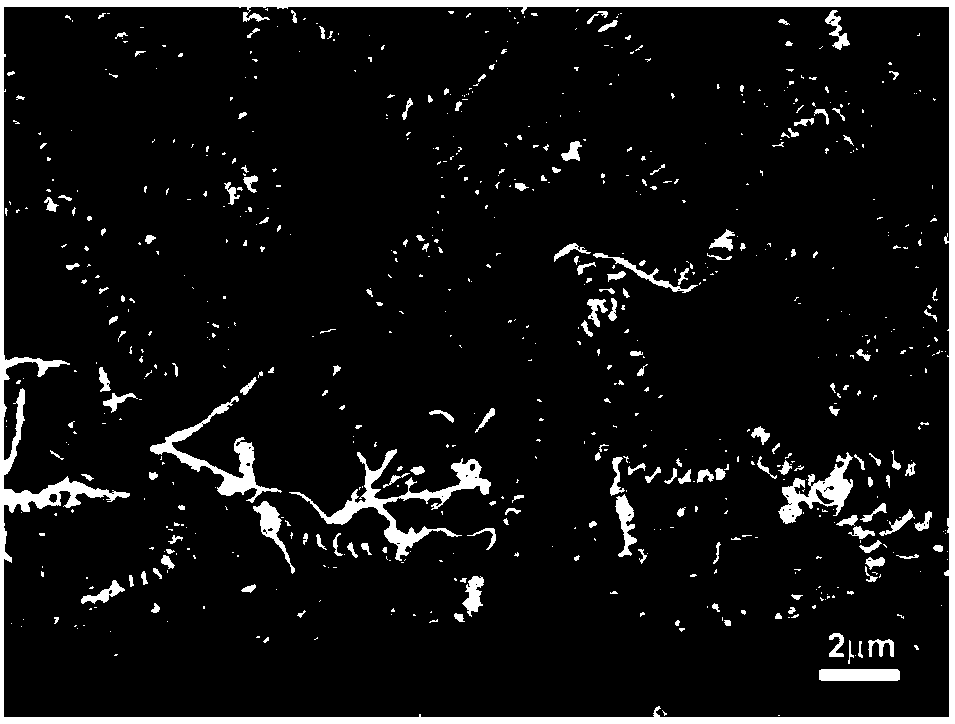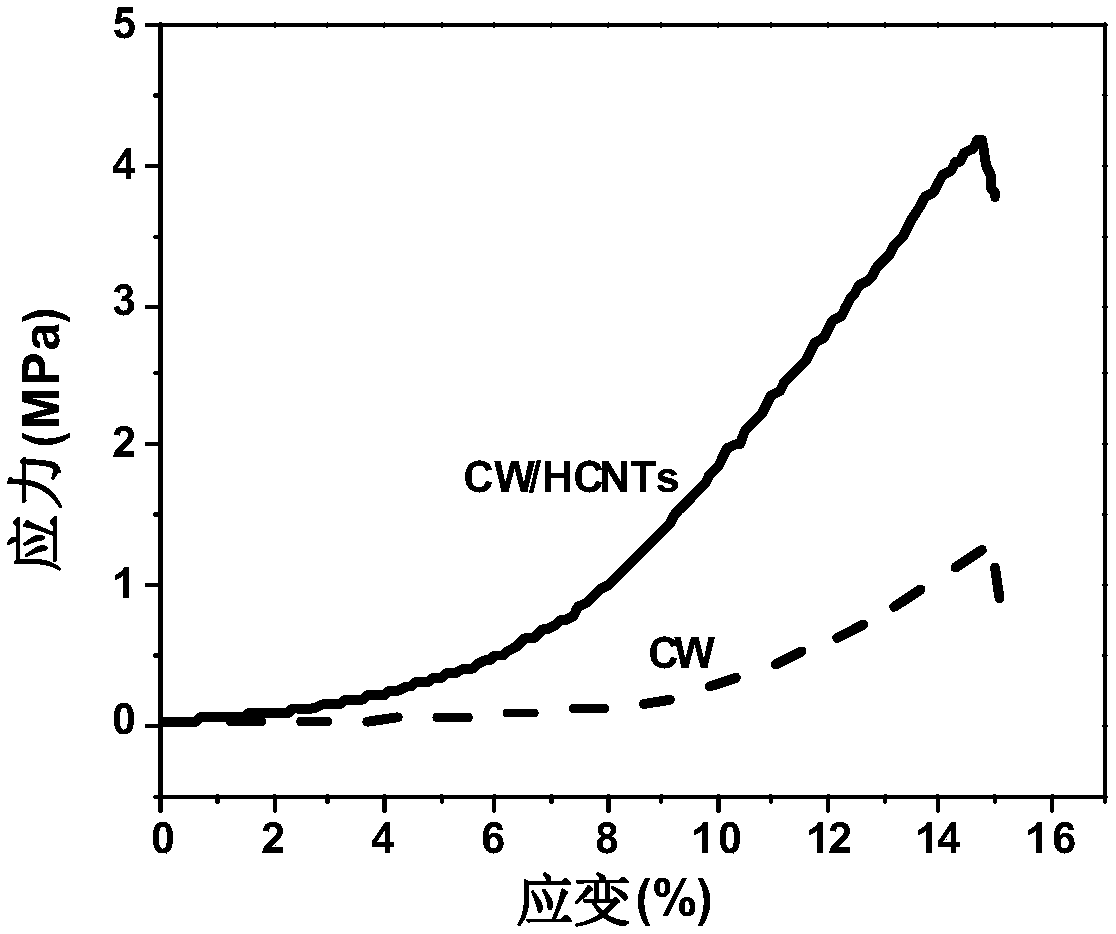Method for growing spiral carbon nanotube on porous carbon derived from timber
A carbon nanotube and helical technology, applied in the field of supercapacitors, can solve the problems of limited application, unsatisfactory electrical conductivity and mechanical properties of carbonized wood, and achieve the effects of reducing production costs, facilitating transmission, and short production cycles
- Summary
- Abstract
- Description
- Claims
- Application Information
AI Technical Summary
Problems solved by technology
Method used
Image
Examples
Embodiment 1
[0028] 1. Clean the wood with ethanol and deionized water to remove impurities and residual organic matter on the surface of the wood and pipes, dry the cleaned wood in an oven at 80°C for 24 hours, then raise the temperature to 900°C in a nitrogen atmosphere, and keep the temperature for 3 After cooling down to room temperature, the sample was ultrasonically cleaned three times with ethanol and deionized water, and then placed in an oven at 60°C to dry for 6 hours to obtain carbonized wood (CW).
[0029] 2. Immerse the CW obtained in step 1 in 0.05mol / L Fe(NO 3 ) 3 In the aqueous solution, reflux at 80°C for 12 hours. After the reaction is completed and the reaction temperature drops to room temperature, the sample is placed in an oven and dried at 60°C for 6 hours to obtain Fe(NO 3 ) 3 The CW.
[0030] 3. Impregnated Fe(NO 3 ) 3 The CW was heated up to 800°C in a nitrogen atmosphere, and kept at a constant temperature for 30 minutes. After the heat preservation was comp...
Embodiment 2
[0035] 1. This step is the same as Step 1 of Example 1.
[0036] 2. In this step, Fe(NO 3 ) 3 The concentration is 0.5mol / L, and other steps are identical with the step 2 of embodiment 1, obtain impregnated with Fe(NO 3 ) 3 The CW.
[0037] 3. Impregnated Fe(NO 3 ) 3 The CW was heated to 800°C in a nitrogen atmosphere and kept at a constant temperature for 60 minutes. After the heat preservation was over, acetonitrile gas was quickly passed through and kept at 800°C for 30 minutes to obtain a CW / CNTs composite.
[0038] 4. Immerse the CW / CNTs composite material obtained in step 3 in the mixed acid solution, and soak it in a vacuum environment at room temperature for 4 hours. The other steps are the same as step 4 in Example 1 to obtain the CW / HCNTs composite material (see Figure 6 ).
Embodiment 3
[0040] 1. This step is the same as Step 1 of Example 1.
[0041] 2. In this step, Fe(NO 3 ) 3 The concentration of is 1mol / L, and other steps are identical with the step 2 of embodiment 1, obtain impregnated with Fe(NO 3 ) 3 The CW.
[0042] 3. Impregnated Fe(NO 3 ) 3 The CW was heated to 800°C in a nitrogen atmosphere and kept at a constant temperature for 30 minutes. After the heat preservation was over, acetonitrile gas was quickly passed through and kept at 800°C for 60 minutes to obtain a CW / CNTs composite.
[0043] 4. Immerse the CW / CNTs composite material obtained in step 3 in the mixed acid solution, and soak it in a vacuum environment at room temperature for 2 hours. The other steps are the same as step 4 in Example 1 to obtain the CW / HCNTs composite material (see Figure 7 ).
PUM
| Property | Measurement | Unit |
|---|---|---|
| diameter | aaaaa | aaaaa |
Abstract
Description
Claims
Application Information
 Login to View More
Login to View More - R&D
- Intellectual Property
- Life Sciences
- Materials
- Tech Scout
- Unparalleled Data Quality
- Higher Quality Content
- 60% Fewer Hallucinations
Browse by: Latest US Patents, China's latest patents, Technical Efficacy Thesaurus, Application Domain, Technology Topic, Popular Technical Reports.
© 2025 PatSnap. All rights reserved.Legal|Privacy policy|Modern Slavery Act Transparency Statement|Sitemap|About US| Contact US: help@patsnap.com



